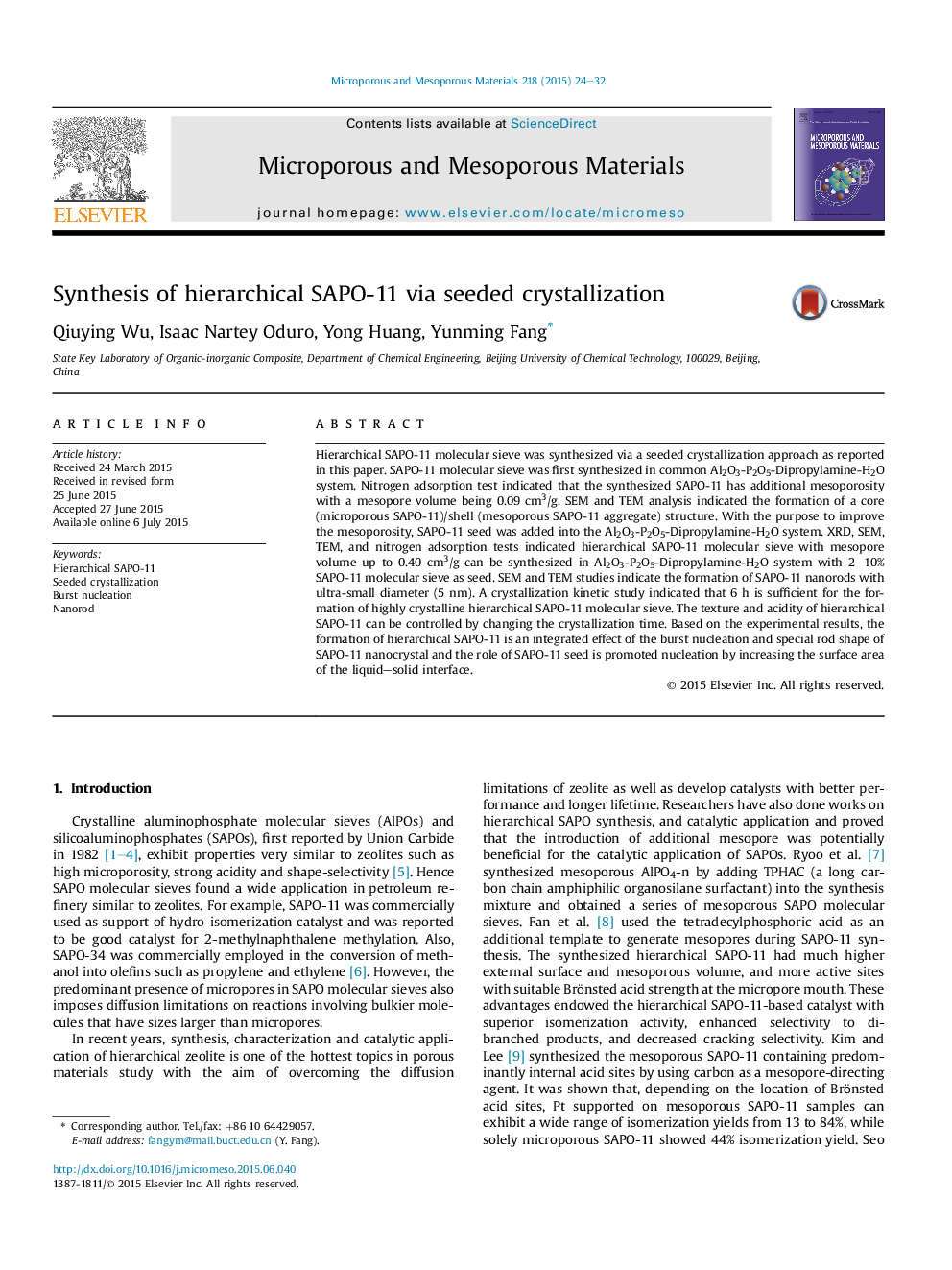| Article ID | Journal | Published Year | Pages | File Type |
|---|---|---|---|---|
| 72424 | Microporous and Mesoporous Materials | 2015 | 9 Pages |
•Microporous core/mesoporous shell structure found in common SAPO-11 synthesis.•Adding SAPO-11 seed into crystallization mixture improve the mesopore formation.•SAPO-11 nano-rod with extremely small size was formed.•Seed promoted nucleation by increasing the area of the liquid–solid interface.
Hierarchical SAPO-11 molecular sieve was synthesized via a seeded crystallization approach as reported in this paper. SAPO-11 molecular sieve was first synthesized in common Al2O3-P2O5-Dipropylamine-H2O system. Nitrogen adsorption test indicated that the synthesized SAPO-11 has additional mesoporosity with a mesopore volume being 0.09 cm3/g. SEM and TEM analysis indicated the formation of a core (microporous SAPO-11)/shell (mesoporous SAPO-11 aggregate) structure. With the purpose to improve the mesoporosity, SAPO-11 seed was added into the Al2O3-P2O5-Dipropylamine-H2O system. XRD, SEM, TEM, and nitrogen adsorption tests indicated hierarchical SAPO-11 molecular sieve with mesopore volume up to 0.40 cm3/g can be synthesized in Al2O3-P2O5-Dipropylamine-H2O system with 2–10% SAPO-11 molecular sieve as seed. SEM and TEM studies indicate the formation of SAPO-11 nanorods with ultra-small diameter (5 nm). A crystallization kinetic study indicated that 6 h is sufficient for the formation of highly crystalline hierarchical SAPO-11 molecular sieve. The texture and acidity of hierarchical SAPO-11 can be controlled by changing the crystallization time. Based on the experimental results, the formation of hierarchical SAPO-11 is an integrated effect of the burst nucleation and special rod shape of SAPO-11 nanocrystal and the role of SAPO-11 seed is promoted nucleation by increasing the surface area of the liquid–solid interface.
Graphical abstractFigure optionsDownload full-size imageDownload as PowerPoint slide
